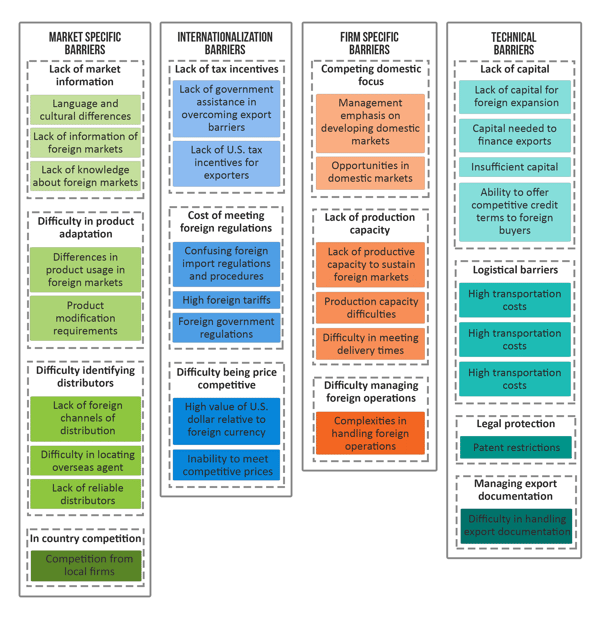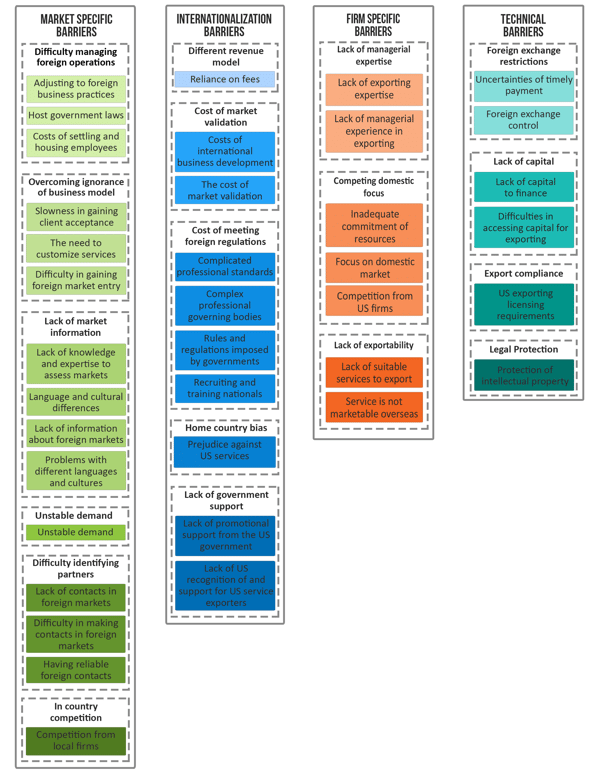This is the second in our 4-part blog Service Company Exporter Series that explores the challenges service companies face when exporting and what tools and support service companies might benefit from. Previously, we looked at the importance of the service sector for the U.S. economy. The current blog compares the most common barriers to export faced by service companies versus manufacturers.
The innate differences between service companies and manufacturers have an impact on the export barriers that each face. The differences between them are worth understanding so that better solutions can be found to assist them, including online tools such as localized websites and social media as well as U.S. export assistance programs provided at state and national levels.
Academic studies typically identify three characteristics that are ascribed to service firms: inseparability, heterogeneity and intangibility. These features have consequences for their ability to export:
- Inseparability: service firms do not enjoy the luxury of being able to separately produce, ship and store products prior to the time of purchase. This limits their international market entry strategies.
- Heterogeneity: the quality of the service is more variable and thus harder to manage from farther away, than it is with manufactured goods.
- Intangibility: delivering a service that cannot be seen nor touched, means service companies inevitably need a local presence to have local credibility.
These innate characteristics influence the nature of export barriers faced by service companies and help explain the differences with the export barriers faced by manufacturers. While recognizing that export barriers are unique to each industry and to each company, the tables below compare the common export barriers encountered by manufacturing firms compared to service firms.
Table 1: Common Export Barriers Faced by Manufacturing Firms
 Table 2: Common Barriers Faced by Service Firms
Table 2: Common Barriers Faced by Service Firms

There are two broad conclusions from comparing the tables above:
- that service companies face a greater number of export challenges and
- that these challenges are frequently more complex.
Many of the barriers for service companies lie in the ‘softer’ areas such as mind-sets, languages, business customs, as well as the dependency on in-market partners and above all, brand recognition. Manufacturers, typically face more tangible barriers such as logistic supply chains, export documentation and local regulations.
The fact that service firms experience more export barriers, and that barriers are more complex, suggests that service companies require greater levels of support from export development programs and especially, innovative tools to help them succeed internationally. This is the subject of our next blog in our Service Company Exporter Series.

